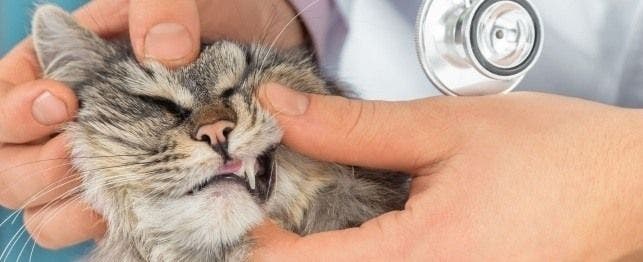
How Age Affects Your Cat
Like us, cats don’t stay young forever – they age. And, like us, some cats age more gracefully than others. When a cat reaches around 10 years of age, he will likely start acting and feeling like a senior cat. The effects of the aging process are both physical and mental. Physically, all organ systems throughout the body will undergo some structural and functional change, affecting vision, hearing, stamina, susceptibility to drugs and locomotor activity. Mental changes are secondary to decreasing brain size and a reduced number of brain cells.
Aging does not affect all cats of a certain age in precisely the same way. Some cats are more successful agers than others. Some, even at the age of 15 years, may still be full of the joys of spring and have no noticeable physical or mental incapacitation. Others of the same age, however, are already beginning to be handicapped by age-related internal organ failure, failing senses or orthopedic problems.
As they age, certain behaviors and changes are expected. Older cats become less active and tend to play less. Geriatric cats sleep even more than younger cats. Some elderly cats will even groom less and eat with less vigor. Knowing what to expect and being prepared can help you determine if the changes you are seeing in your cat are related to advancing age or if underlying illness is at fault.
- The Kidneys. Kidney function in cats is often impaired in old age. The transition from optimally functioning kidneys to ones that function poorly is a gradual process. With advancing age, blood flow to the kidneys decreases and there is a loss of filtering cells. The result of all this is a failure of the kidneys to concentrate urine, so that older cats with this type of deterioration will drink more and, consequently, produce a larger amounts of more dilute urine. It is extremely important to make sure that such cats have constant access to water to prevent kidney failure.
- The Liver. Although some tests of liver function show progressive deterioration with age, most cats do not develop liver disease. However, fat can accumulate in the liver, sometimes as a secondary condition to other diseases, such as diabetes mellitus (sugar diabetes). This can cause the liver to enlarge, with higher levels of liver enzymes in the blood. Liver cirrhosis is also a disease of the older cat because of its chronic and progressive nature.
- Thyroid Glands. Hyperthyroidism has been reported to be the most common endocrine disease in the cat. Most cases develop in the older cat and are due to a tumor of the thyroid gland. Increased appetite with weight loss are common signs of this disease.
- Pancreas. Diabetes mellitus is usually a disease of the older cat. Complications associated with this disease include increased thirst and urine output, muscle wasting and liver disease. This type of diabetes can be controlled using dietary control and insulin, if necessary.
- Musculoskeletal System. As a cat ages, the adrenal glands produce less anabolic steroids, causing muscles to waste away. Degenerative conditions affecting the orthopedic systems also mark old age. While young cats appear strong and well-muscled and can run like the wind, older cats usually show muscle wasting and are often handicapped by arthritis or intervertebral disc disease. Analgesics and, if indicated, various surgical procedures can bring many cats relief.
- Cardio-respiratory System. As you might expect, the heart and lungs are affected with increasing age. A common heart disease of older cats is one in which the muscles of the heart wall thicken. This condition leads to heart murmurs and eventually to heart failure. Meanwhile, changes occur in the lungs. Interstitial fibrosis and thickening of the walls of small airways makes it harder for the cat to breathe.
- Special Senses. Cats’ eyesight becomes poorer as they get older, due to age-related changes in the eye itself and in the processing of visual images in the brain. The most common ocular aging change of all is lenticular sclerosis, in which the lens of the eye appears grayish. This does not significantly affect vision at all. Cataracts, however, which are also more common in elderly cats, do impair vision, particularly when the cat is in bright light and his pupils are constricted.
Cats’ hearing deteriorates progressively with age so that many older cats appear not to hear you, and they do not respond to outside sounds that formerly would have aroused them. Loss of hearing can be either peripheral, due to changes in the ear itself or, as with failure of vision, related to changes within the brain.
- Central Nervous System. The brain weight of cats decreases with age primarily because of nerve cell death. Functionally, there is decreased production and increased destruction of substances required to transmit messages from the brain to the body. If cognitive dysfunction is involved, there are plaque-like accumulations of beta-amyloid in the brain.
- Behavioral Changes. Because of general central nervous system changes, cats progressively slow down mentally as they age. They become less interested in things around them, less reactive to things going on and spend more time sleeping. “Normal” aging changes in cats are not usually incapacitating but merely produce a gradual decline in mental function, which can seem quite appropriate.